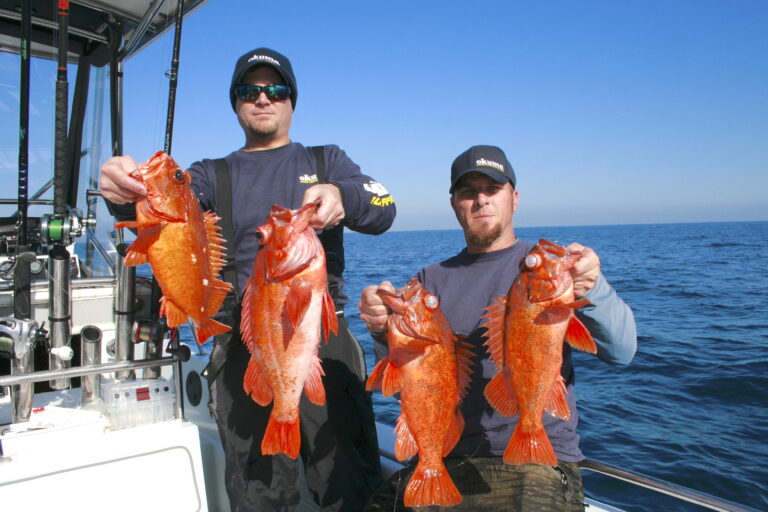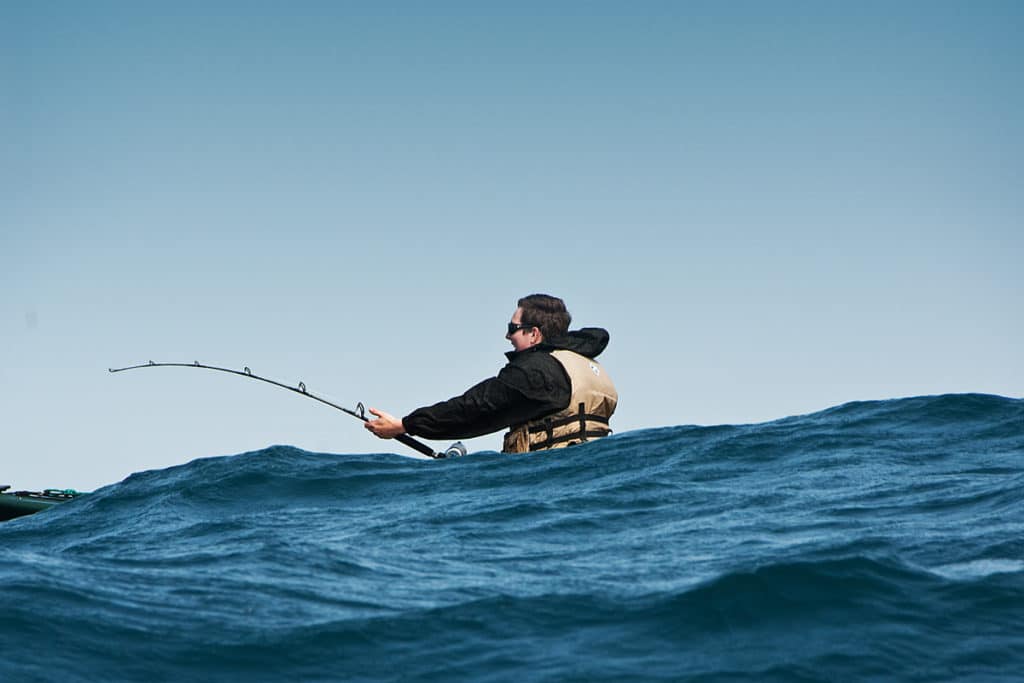
Bobbing around in blue water in a kayak puts you right in the middle of the action, with waves slapping the hull, birds screeching nearby and the wind whipping through the rods. Less than a quarter-inch of plastic separates you from the water. Fish dart below, sharks swim by practically at eye level, the sea teems with life and you’ve never felt so much like just another part of the food chain.
“You’re going to get eaten by a shark,” my wife said when I told her I wanted to ferry my kayak 30 miles off -Hatteras -Island, North Carolina, to target tuna, dolphin and wahoo in the Gulf Stream.
Fortunately, I’m not the only person who ignores the voices of reason, so I had little trouble gathering a crew of hard-core kayak anglers to charter a mothership to carry us and our kayaks offshore. On an early summer morning, we met charter captain Kenny Koci and loaded our kayaks on his 50-foot The Big Tahuna. As we left the marina, an old salt on the dock yelled, “Don’t get eaten by a shark!” Long story short: We launched the kayaks on the edge of the Gulf Stream, everyone caught fish and no one was eaten by a shark.
Offshore Rods and Rigs
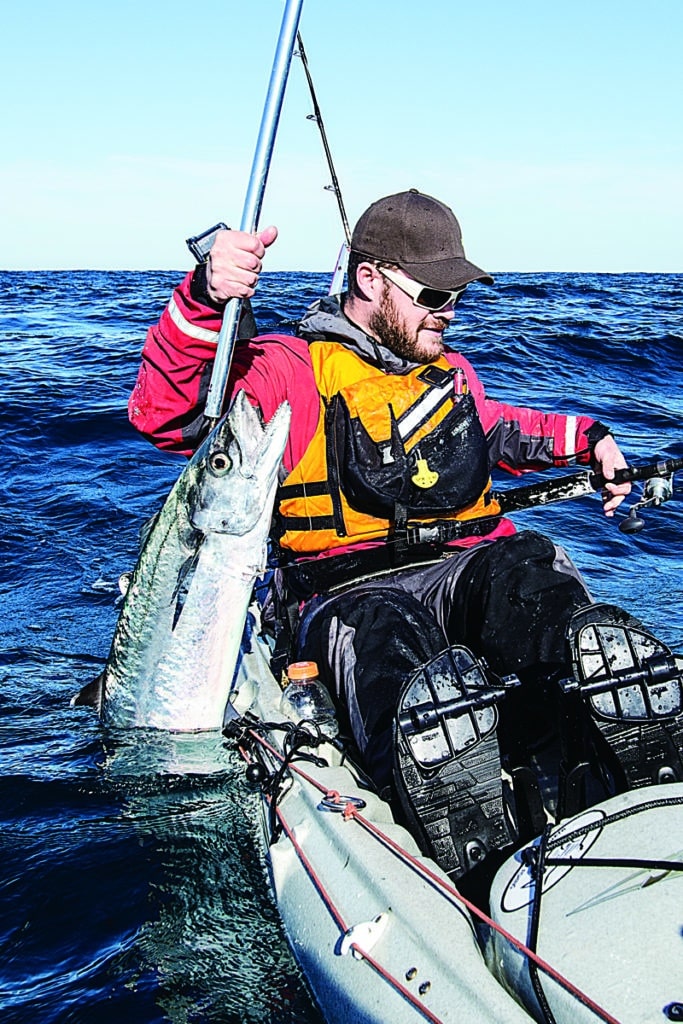
That first venture paved the way for many offshore kayak trips to follow, over which I refined the tactics and tackle for making the most of this exciting way to fish.
First of all, kayak anglers don’t need heavy trolling rods and harnesses. On most trips, I carry three rods. Two are 6-foot jigging rods with high-speed conventional reels spooled with 80-pound braid marked to indicate depth. I tie a Bimini twist at the end of the braid and use a no-name knot to attach 8 feet of 80-pound fluorocarbon leader. I bait one of the outfits with a naked ballyhoo on a 9/0 hook and set up the other for vertical jigging.
When targeting king mackerel, I rig both rods with a single-strand wire stinger rig and four No. 4 treble hooks. The third outfit, a 7½-foot heavy-action spinning rod and matching reel with 80-pound braid and a 4-foot, 100-pound mono leader, carries a large topwater lure.
I troll two lines from rods placed in flush-mount holders behind the seat, setting one bait 25 to 50 feet back and the other from 50 to 100 feet. Top speed in the kayak is about 3 knots, so high-speed trolling is out. But tuna, dolphin and kings respond to a naked ballyhoo swimming slowly just under the surface.
Offshore Kayak Fishing Tactics
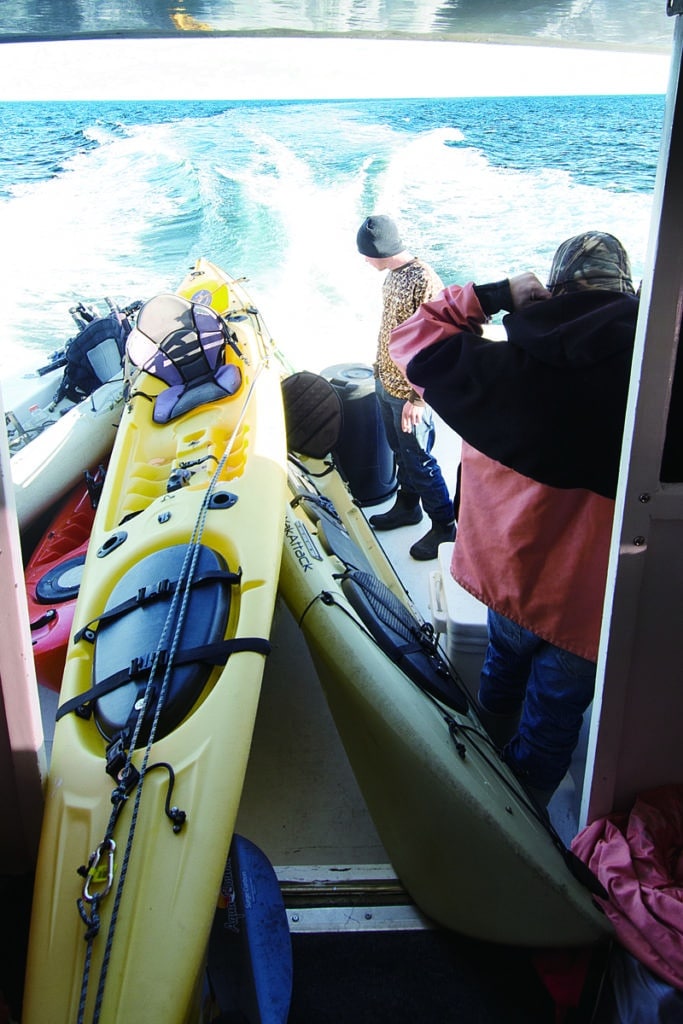
From late spring through late fall, massive fields of sargassum form at the Gulf Stream break. We generally launch the kayaks at one end of the weed line and slow-troll along the edge. While the captain moves off to search for fish, I’ll drop the ballyhoo back and paddle along grass lines, rips or breaks. A GPS allows me to track my trolling pattern and monitor my speed. I don’t usually carry a fish finder. I rely instead on the mothership’s electronics and use a VHF radio to stay in touch with the captain for fishing reports. If I see fish working the surface, I’ll throw the popper. If the captain marks fish on his fish finder, I’ll drop a jig, per his direction.
Blackfin Tuna Time
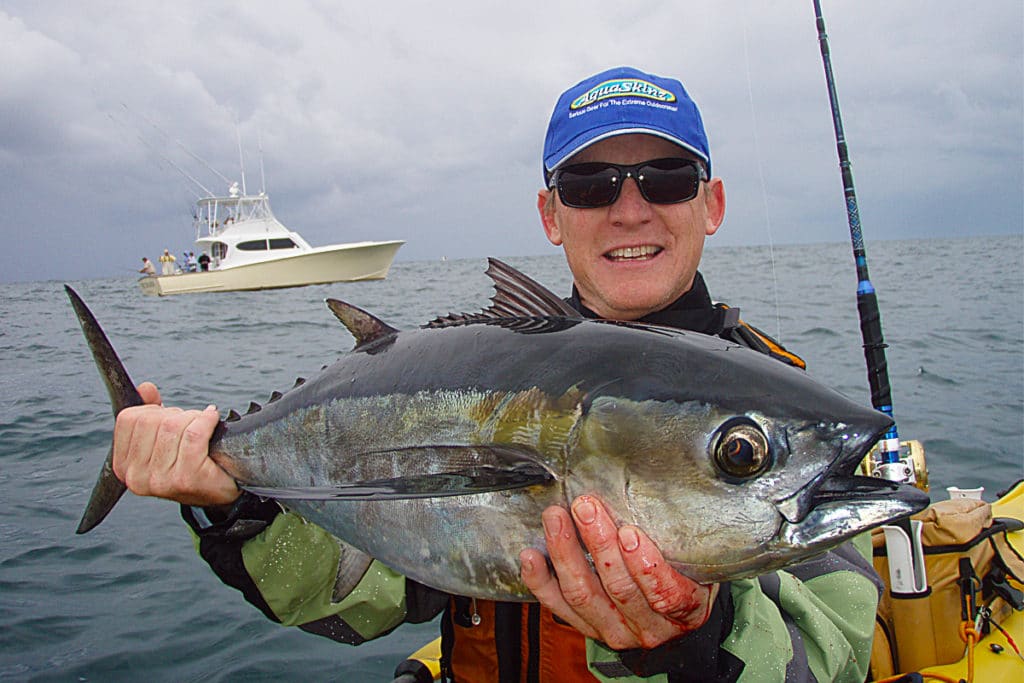
One of the best opportunities for jigging is during winter, when huge schools of beefy blackfin tuna gather south of Diamond Shoal Light off Cape Hatteras. The captain drops me off up-current of the marked fish, and I drift and vertical jig. I use color-coded line that marks depth in 10-meter increments. When the captain reports the depth where he is marking fish, I drop my jig that far down and retrieve as fast as possible.
Since in a kayak one sits so close to the water, I get up on my knees or sit on the crate to get a better angle on the jigging rod. There is a lot of life on the rocks in the winter, and competition is tough. Working the jig fast keeps it away from false albacore and boating a tuna quickly keeps it away from the sharks
Trophy King Mackerel
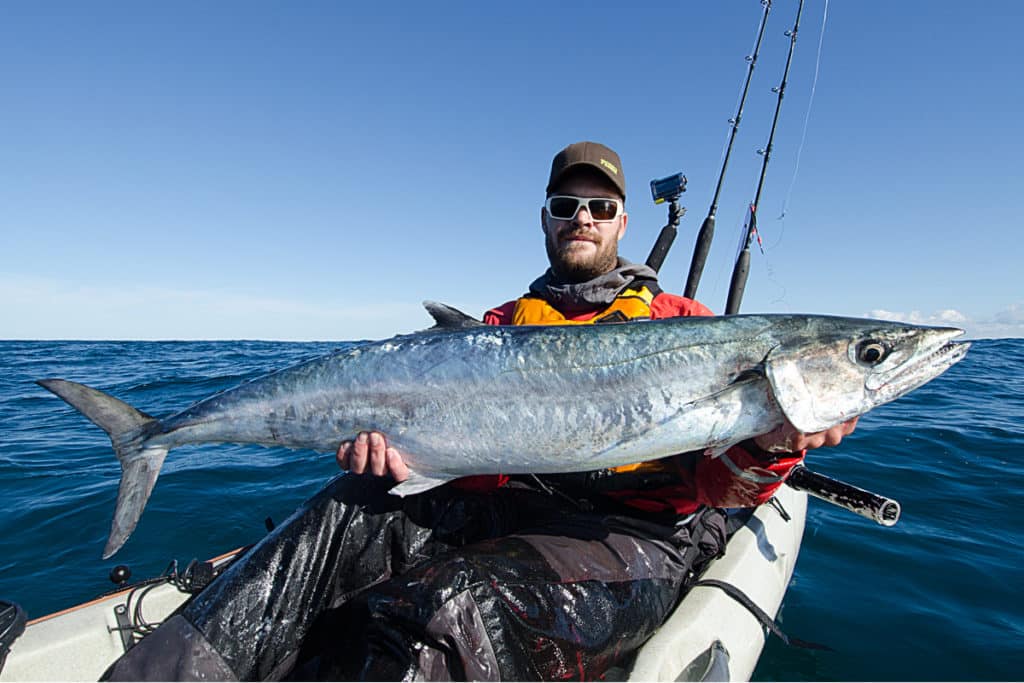
Fall is the best time to target king mackerel with live bait. From September to December, trophy kings school up on the wrecks and around bait schools within a few miles of Hatteras Inlet. The mothership keeps me supplied with live menhaden, but ballyhoo work as well. Action is usually so fast that I troll just one rod with the bait back 20 yards. Whammo! Kings show menhaden no mercy: The strike is often an aerial assault that covers you with spray.
A Big Pelagic Will Take You And The Kayak For A Ride
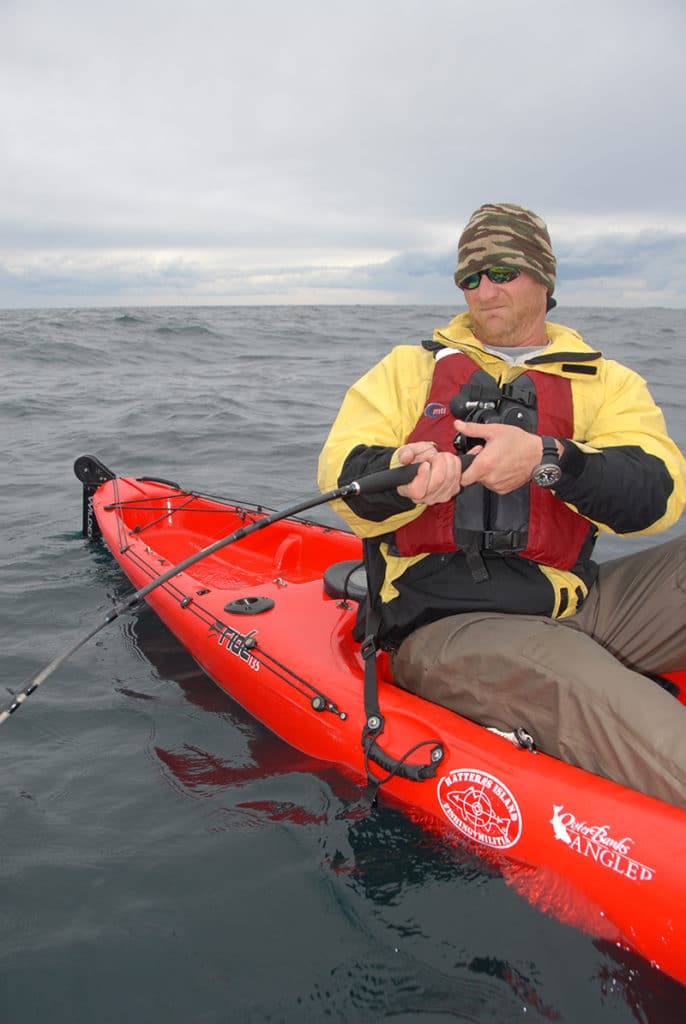
Fighting a big fish from the kayak is like riding a bronco. A 5-pound striped bass will drag a kayak through the water at a good clip, but a 30-pound king mackerel will take you for a ride. I once watched a buddy hook into a 168-pound tuna and get dragged for more than a mile. The fish pinned his rod to the gunwale and pulled him forward, backward and in circles for over two hours.
A strike on the troll whips the kayak around in the direction of the fish. That creates slack in the line, so I grab the rod, come tight and set the hook, then hold the rod low to the bow to swing the kayak around and follow the fish. I keep the drag on my reel set between 5 and 7 pounds, letting the weight of the kayak tire the fish. Set the drag too tight and the fish can flip the kayak and pull you into the water. I’ve seen it happen. Once the fish is close, reach out with the gaff and swing it into the cockpit. Then just transfer the fish to the mothership and get back to fishing.
I’ve returned to Hatteras with my kayak many times, lured back by the immediacy of the water and sea life that is lacking in a motorboat. And fighting a fish in a kayak is like hand-to-hand combat with the angler at a distinct disadvantage.
Kayak Deployment Offshore
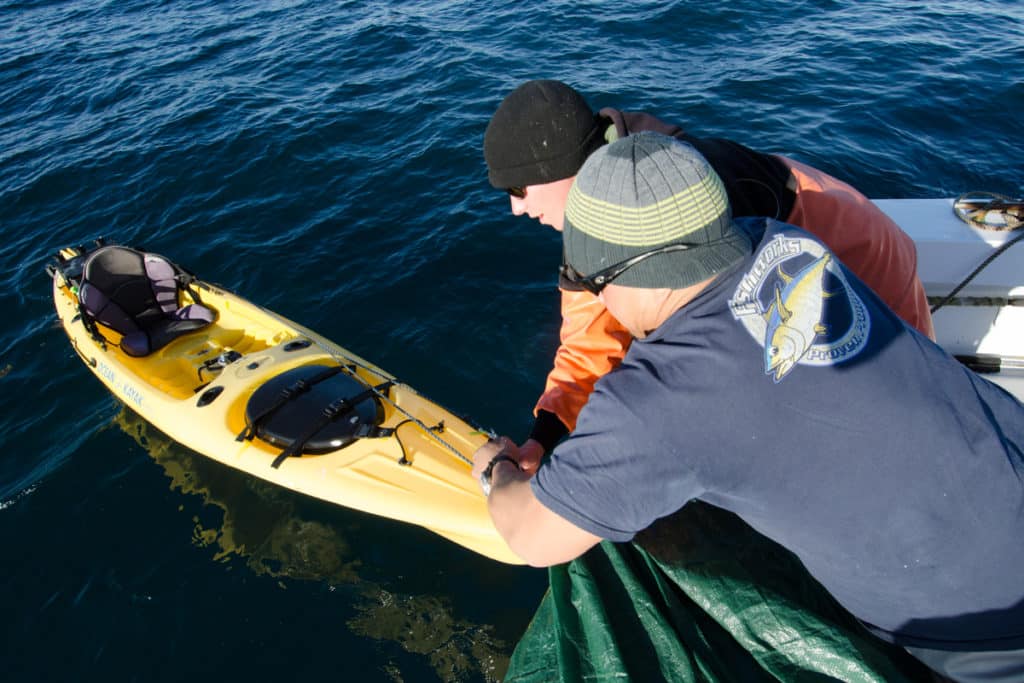
The toughest part of mothershipping is getting in and out of the kayak. To launch, -attach a bow rope to the kayak, drop it in stern first and pull it alongside the boat. While the mate holds the bow rope, I swing my legs over the side with my belly on the gunwale. When my feet find the kayak, I stand in it. Once I have my balance, I drop into the seat. Then my friends hand me rods, gaff and paddle. To get back in the boat, reverse the -process. Hand over rods, gaff and paddle, stand in the kayak and grab the gunwale. When I feel a wave lifting me up, I use the momentum to roll over the gunwale and flop onto the deck.
Outfitting The Kayak
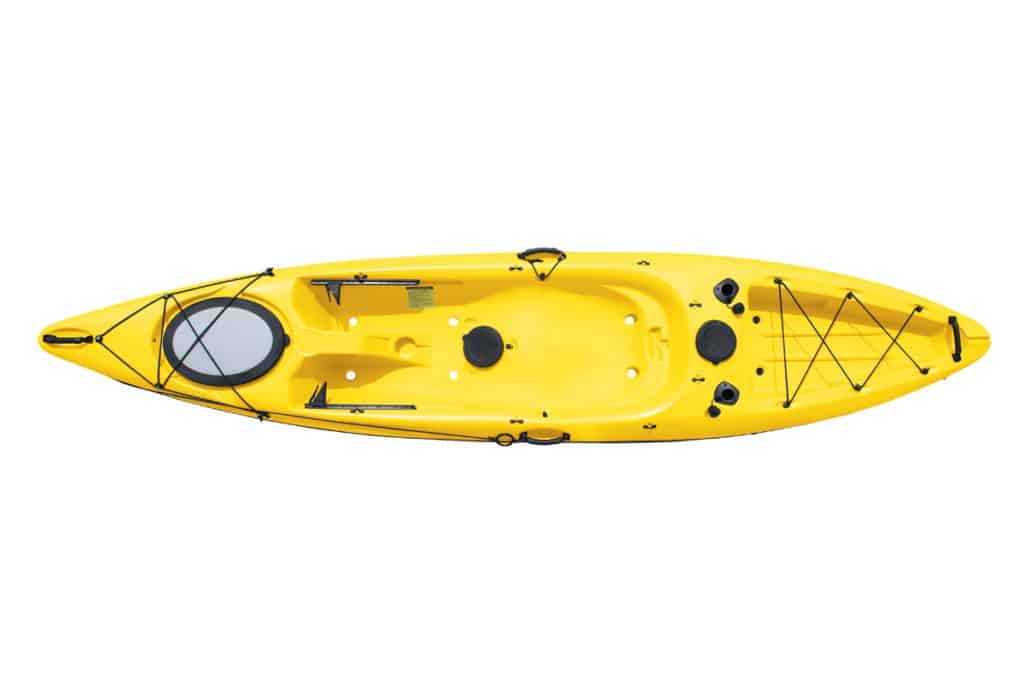
An offshore kayak excursion starts with careful preparation and outfitting. The best kayak is an open-water boat between 13 and 16 feet long with a narrow beam and rockered hull to handle big seas, wind, current and a lot of paddling. In addition to the requisite PFD and lightweight paddle, I throw an extra paddle in my bow hatch. I learned that -lesson after one of my buddies lost his paddle and was on his way to Nova -Scotia -before the -captain did a head count. A 20-foot length of 5 mm climbing rope is handy when loading and unloading the kayak or towing from one spot to the next.
Electronics Kayakers Should Carry
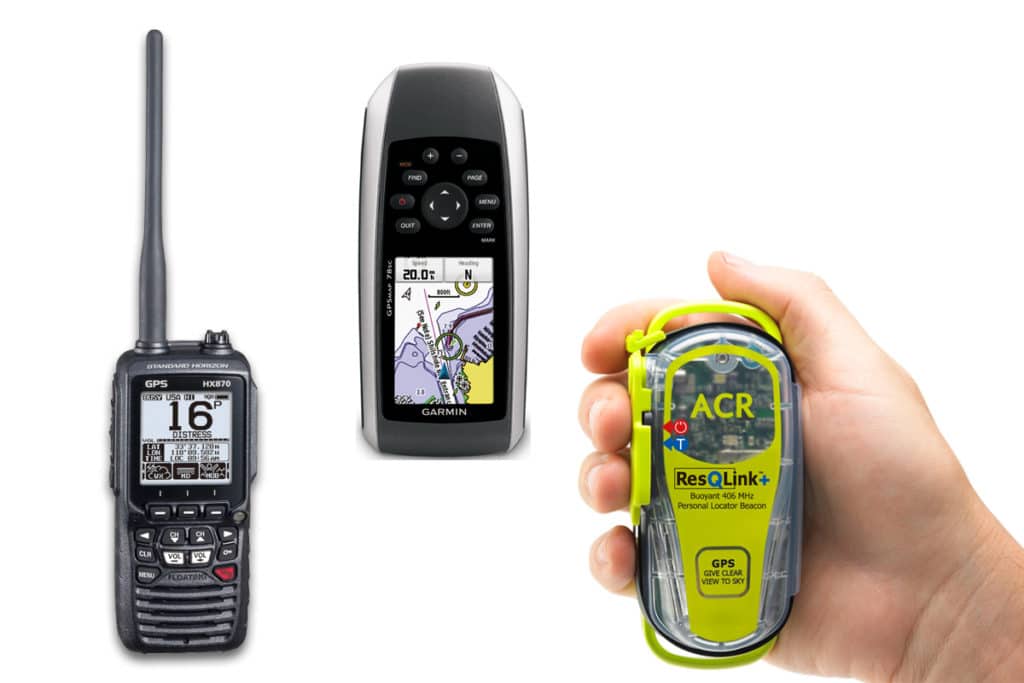
Electronics Kayakers Should Carry
I also carry a waterproof handheld VHF to stay in touch with the captain of the mothership and fellow kayak anglers fishing nearby, and a handheld GPS to track my location and monitor speed. I store both the GPS and VHF radio in my PFD so I can call for help if I get separated from my kayak. As an added safety precaution, I always bring along a PLB with built-in GPS in case I fall out.
Setting Up The Kayak For Offshore Fishing
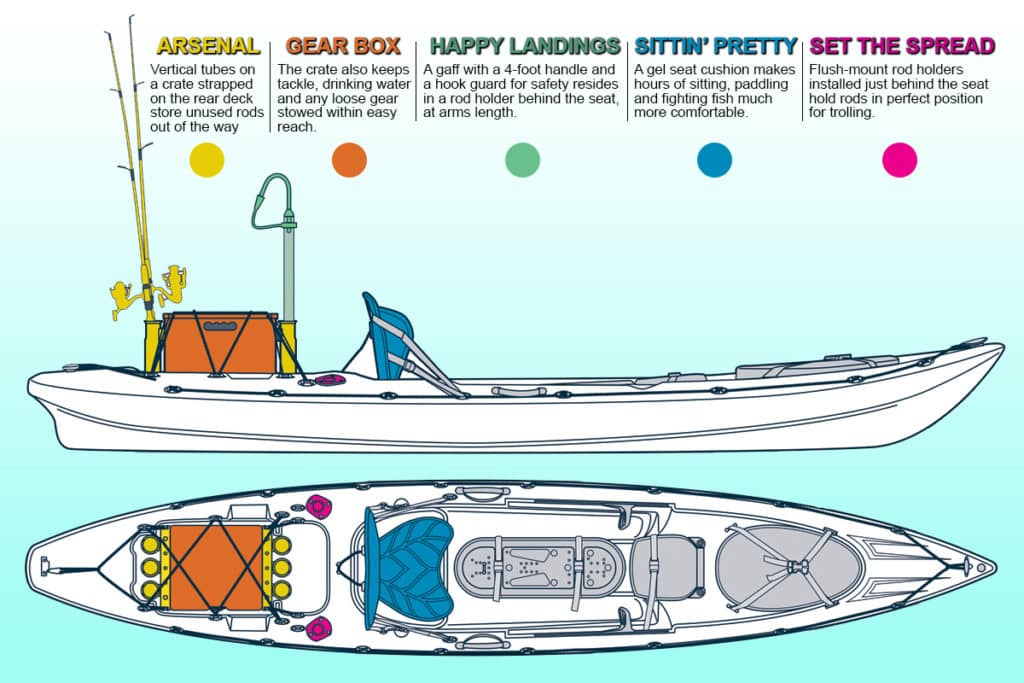
I load my gear in a YakAttack BlackPak crate strapped in the stern of the kayak. Vertical rod holders on the crate carry my rods when I’m fishing. Three rods, a box of essential tackle, a 4-foot gaff and a pair of wiring gloves round out my gear. Simplicity and organization lead to efficiency, and packing light lets me move fast.








